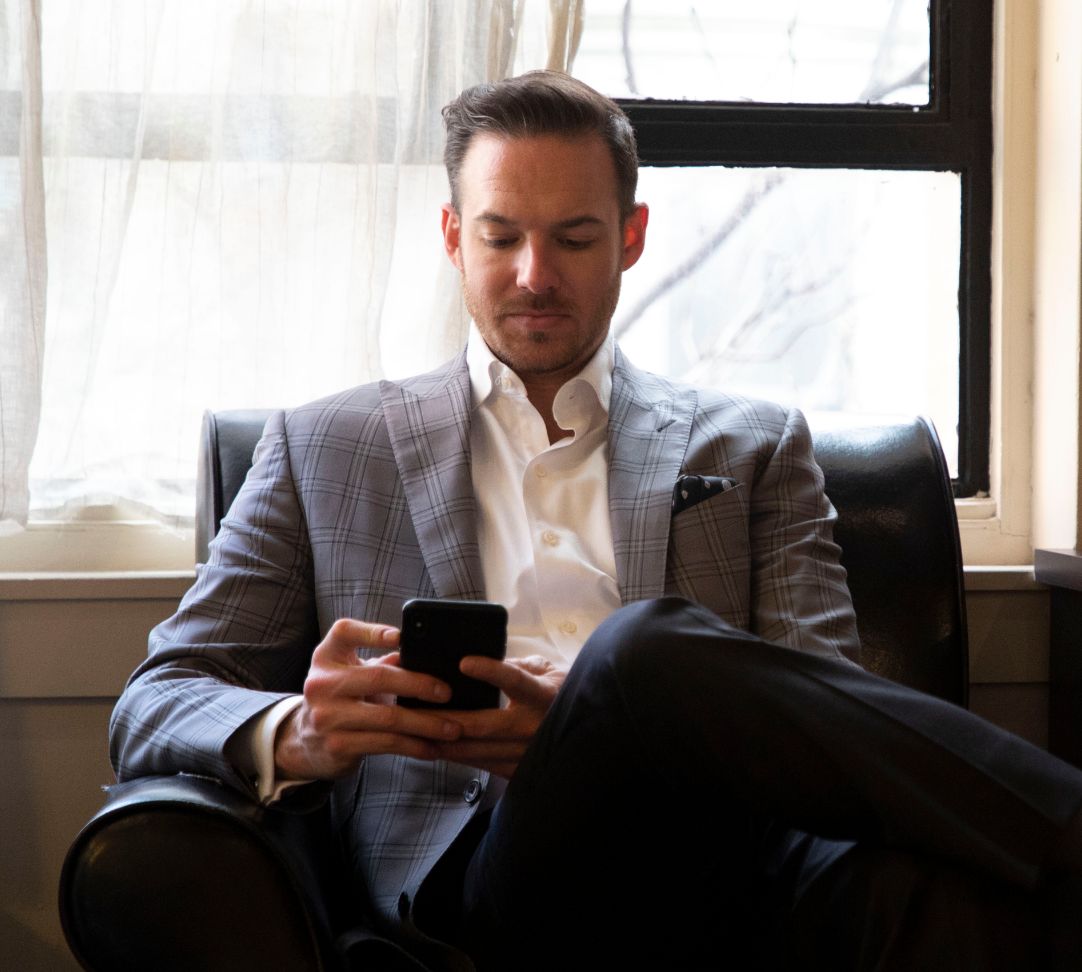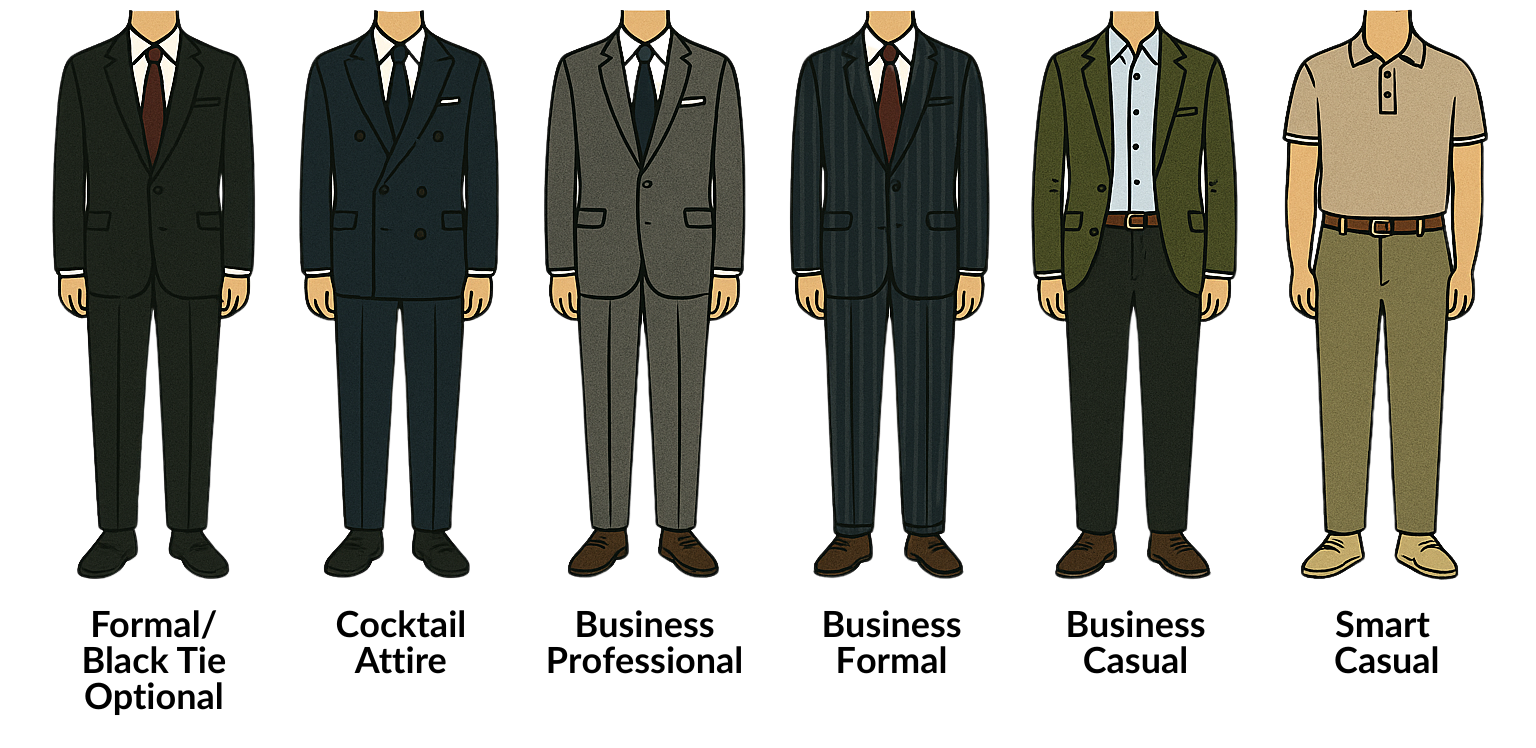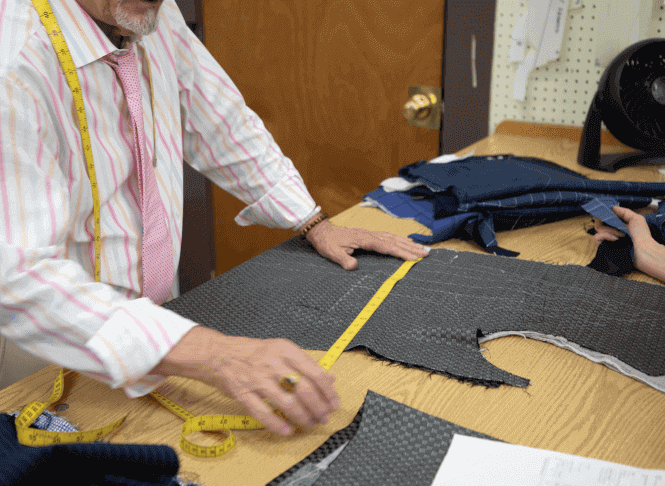How a man decides to keep his pants around his waist is based on a variety of factors. His personal preference comes into play, as does the purpose for which he’s dressing. Making this decision requires some base knowledge, and with that in mind, today’s post will be a simple side-by-side comparison of braces and belts.
Belt & Suspender Basics
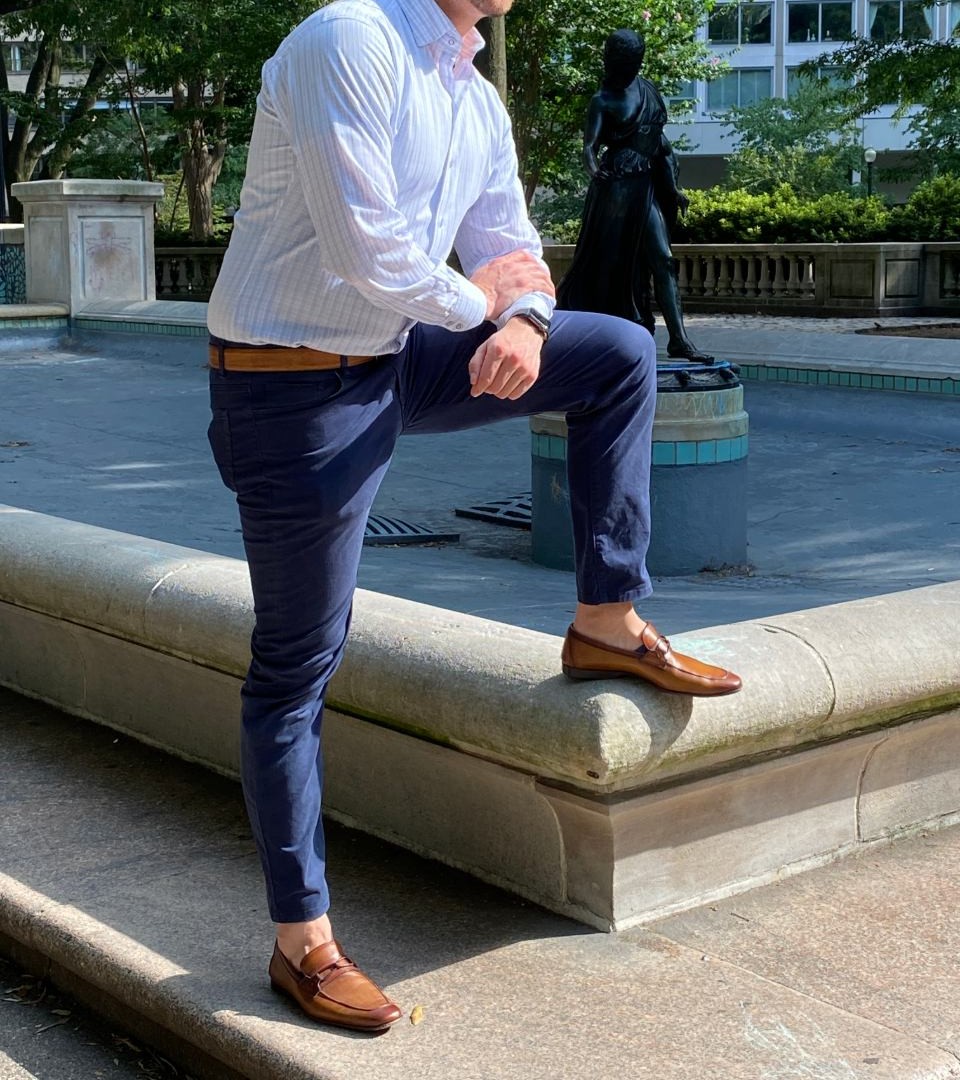
Like we allude to above, both belts and suspenders are simple accessories that hold your pants up.
A belt is a highly prevalent accessory; its ubiquity doesn’t warrant much explanation. In terms of belts’ utility, they’re the polar opposite of the necktie. The former is mostly function over form, whereas the latter values form over function.
Braces and suspenders, though, need a little more background. Many of us are aware, but just to get on the same page: the terms “suspenders” and “braces” are more or less interchangeable. They both refer to what Americans know as “suspenders,” and what Britons know as “braces.” In fact, the word “suspenders” in British English refers to what Yanks know as garters. We’ll use both terms interchangeably here.
Some in the U.S.A. delineate suspenders and braces based on their fastening mechanism, with suspenders attaching to their pants via a clip, and braces via button fasteners.
Suspenders
 Braces are strips of material – typically silk, wool, or a stretchy man-made material – that button to your pants’ waistband. Nowadays, suspender buttons are typically placed on the inside of a waistband – the vast majority of custom pants we make here in Philadelphia use such a button placement.
Braces are strips of material – typically silk, wool, or a stretchy man-made material – that button to your pants’ waistband. Nowadays, suspender buttons are typically placed on the inside of a waistband – the vast majority of custom pants we make here in Philadelphia use such a button placement.
Up through the early 1900’s, though, suspender buttons were placed on the outside of the trouser waistband. The reason for this was Victorian – braces were considered to be underwear and would thus always be covered by a vest. It’s rare to see braces worn like this nowadays, but the practice isn’t totally extinct.
As a general rule, we simply don’t ever recommend wearing clip-on suspenders. It’s akin to wearing a clip-on tie in that it’s amateurish and difficult to take seriously.
Braces Styles
There are two shapes of braces: Y-back and X-back. X-back suspenders (which form an “X” shape across your back) exist in the world of true workwear – think of a firefighter’s uniform. This makes sense when you think about it: the additional fastening point of an X-back versus a Y-back makes it stronger and thus better able to withstand the rigors of work. It’s rare to see X-back suspenders outside this context.
Y-backs, on the other hand, form what looks like a capital Y on your back and are much more common in the world of menswear.
Belts
Belts have been around for ages – literally since the Bronze Age. Depending on the historical context, men wore belts as decoration, for utility, or both. In modern times, belts were largely relegated to use in the military. Where suspenders allow your pants to float around your waist, belts cinch the pant waist around you.
This changed as American GI’s returned home from the Second World War. Having grown accustomed to the utility and convenience of belts while overseas, they were loathe to return to wearing braces after getting home. As a result, belts became hugely popular, and sales for them far outpaced that of suspenders. That trend continues to this day.
When & How To Wear Which
 The first thing to discuss is what pants should accompany a belt or pair of suspenders. There are two factors to consider – whether or not the waistband has belt loops, and how the pants fit.
The first thing to discuss is what pants should accompany a belt or pair of suspenders. There are two factors to consider – whether or not the waistband has belt loops, and how the pants fit.
You obviously need belt loops to wear a belt. As for braces, however, sartorial purists argue that you should opt for pants without belt loops. The not-invalid logic is that the presence of belt loops coupled with the absence of a belt looks empty and incomplete. At the shop, we’re don’t take a strict view on this one, and often make pants for clients that have both brace buttons and belt loops for maximum versatility.
Next to consider is the fit of your trousers. Belts will look best on waistbands that hug the wearer perfectly. If it’s even a little bit big, the cinched belt will cause the waistband to buckle in an unsightly way. Pants worn with braces, however, can and should be cut slightly roomier in the waist and seat. This allows them to “float” around your waist while hanging from your shoulder, and believe us, once you’ve experienced how comfortable this is, you may never go back to wearing belts.
Brace & Belt Formality
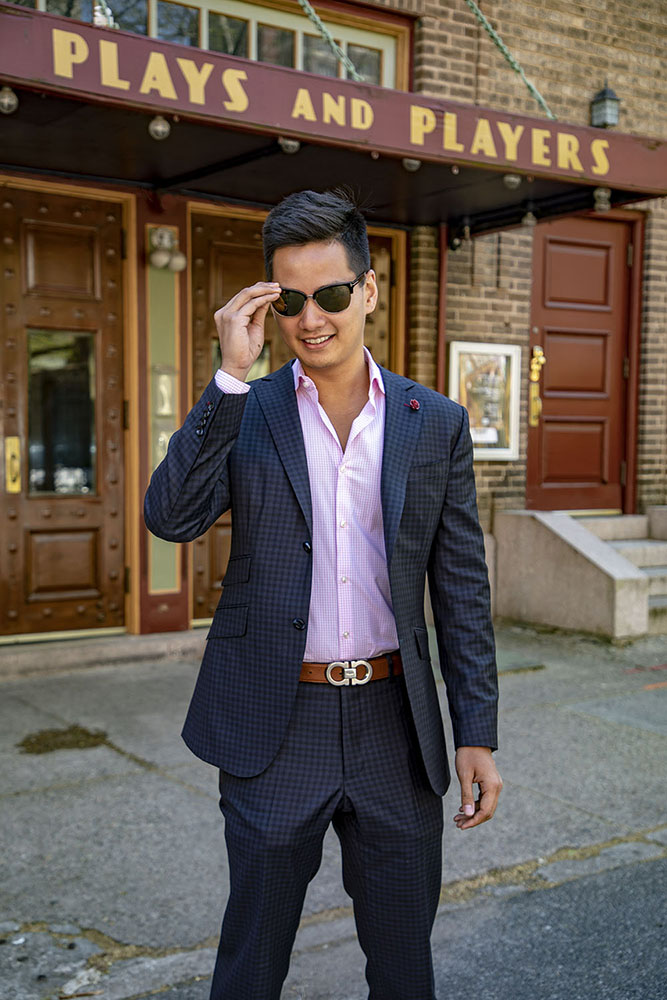
Determining a belt or braces’ dressiness is a matter of width. Most belts, including our custom belts, are between 1 1/4″ and 1 3/8″ wide. The narrower end of the spectrum is dressy, while the wider end is more casual. Men’s belts are rarely narrower than 1″, and belts closer to 2″ wide tend to be reserved for very casual looks or proper workwear. With that said, never wear a belt with a tuxedo.
Most men’s braces are 1 3/8″ wide regardless of formality. Wider than this starts looking like workwear, and narrower braces are just too reminiscent of the hipster look from the mid-2000’s to early 2010’s.
How To Pair Wear Belts & Suspenders
There are few hard-and-fast rules in menswear, but if there’s one we follow, it’s this: never wear a belt and suspenders simultaneously. Glenn O’Brien once described this as “as case of extreme pessimism,” and we couldn’t agree more.
Everyone knows the wisdom of matching the color of your belt to that of your shoes. Similar logic holds for braces – you coordinate the color of the button holders with your shoes. The one exception is formal braces that may have white button holders – you’d wear black shoes, not white.
Suspenders offer an additional opportunity (and a potential challenge) for coordination because they share the same visual plane as your tie and shirt. The best way to approach this combination is to mimic how we coordinate ties and pocket squares.
Conclusion
No matter how you choose to dress your pant waistband, you can do it in permanent style with Henry A. Davidsen. Give us a call at 215-310-0219 or email info@henrydavidsen.com to start the conversation.

